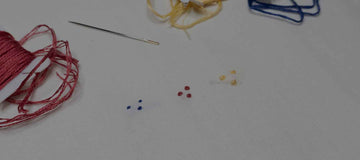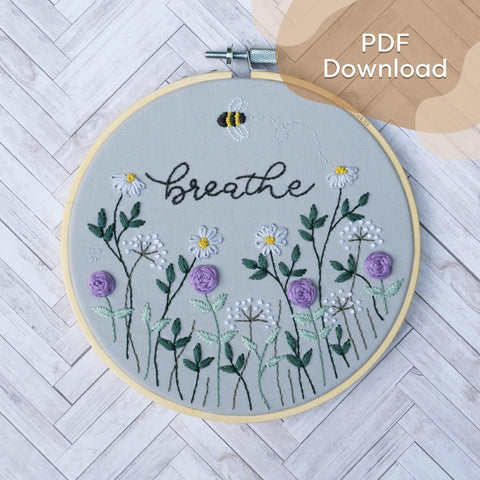
Details
- Name:
-
French Knot
aka: French Dot, Knotted Stitch, Point Noué Stitch, Twisted Knot Stitch - Difficulty:
-
Intermediate
- Structure:
-
Knotted Isolated
- Technique:
-
basic crewelwork ribbonwork stumpwork surface whitework
- Uses:
-
Embellishment Filling Powdered Filling Shading
- Variant Stitches:
-
Colonial Knot Pistil Stitch
Watch this video on YouTube.
Overview
Despite being considered one of the simplest knots, the French knot is often perceived as one of the most challenging stitches to master. Consequently, beginners may develop an aversion to it. However, with practice, it becomes more manageable.
A bold raised knotted dot used for decorative purposes giving texture to the surface of the material. They can be used singly or in closely packed groups or scattered. French knots can be utilized to create small flowers or as a filling stitch for small circles and flower centers. When closely packed together, they can produce a textured, "woolly" effect.
Method
A lot of people find they need to practice their tension with this knot on a spare piece of fabric before attempting on a final piece. Don't stress; you will get the hang of it with trial and error!





History
French knots make an appearance in various historical embroidery pieces. They can be found on the Butler-Bowdon cope, an opus Anglicanum piece from the 14th century, although they were not commonly used in this tradition. Additionally, they adorned a notable piece of Swiss/south German ecclesiastical embroidery from the 16th century. By the following century, French knots had become prevalent in Jacobean crewelwork and raised work, often depicting foliage or hair.
In the 19th century, French knots were employed across different embroidery traditions and regions. In Britain, they embellished silk needle paintings at the century's onset, created geometric designs for Java canvas work, and were used in the 1870s and 80s to cover large areas of ground fabric in 'etching embroideries.' In Eire, they served as a key element in Montmellick white work, while in Portugal, they were part of the Guimarães embroidery tradition.
Projects
Here are some projects you can complete that include this stitch!
Reference: RSN Stitchbank








